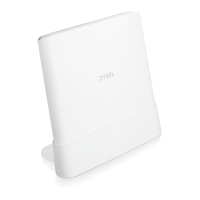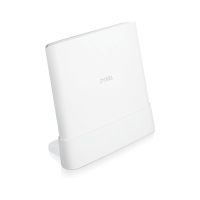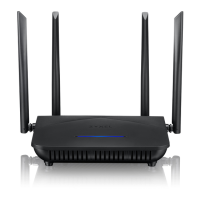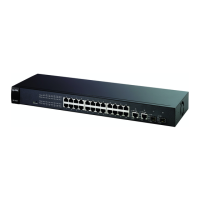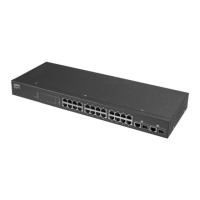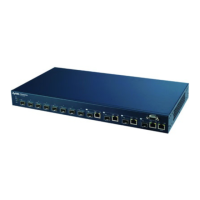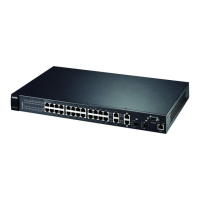Chapter 23 Product Specifications
AMG1202-T10A User’s Guide
218
Wireless Functionality
(wireless devices only)
Allow the IEEE 802.11b/g/n wireless clients to connect to the ZyXEL
Device wirelessly. Enable wireless security (WEP, WPA(2), WPA(2)-PSK)
and/or MAC filtering to protect your wireless network.
Firmware Upgrade Download new firmware (when available) from the ZyXEL web site and use
the web configurator to put it on the ZyXEL Device.
Note: Only upload firmware for your specific model!
Configuration Backup &
Restoration
Make a copy of the ZyXEL Device’s configuration. You can put it back on
the ZyXEL Device later if you decide to revert back to an earlier
configuration.
Network Address
Translation (NAT)
Each computer on your network must have its own unique IP address. Use
NAT to convert your public IP address(es) to multiple private IP addresses
for the computers on your network.
Port Forwarding If you have a server (mail or web server for example) on your network,
you can use this feature to let people access it from the Internet.
DHCP (Dynamic Host
Configuration Protocol)
Use this feature to have the ZyXEL Device assign IP addresses, an IP
default gateway and DNS servers to computers on your network. Your
device can also act as a surrogate DHCP server (DHCP Relay) where it
relays IP address assignment from the actual real DHCP server to the
clients.
Dynamic DNS Support With Dynamic DNS (Domain Name System) support, you can use a fixed
URL, www.zyxel.com for example, with a dynamic IP address. You must
register for this service with a Dynamic DNS service provider.
IP Multicast IP multicast is used to send traffic to a specific group of computers. The
ZyXEL Device supports versions 1 and 2 of IGMP (Internet Group
Management Protocol) used to join multicast groups (see RFC 2236).
Time and Date Get the current time and date from an external server when you turn on
your ZyXEL Device. You can also set the time manually. These dates and
times are then used in logs.
Logs Use logs for troubleshooting. You can send logs from the ZyXEL Device to
an external syslog server.
Universal Plug and Play
(UPnP)
A UPnP-enabled device can dynamically join a network, obtain an IP
address and convey its capabilities to other devices on the network.
Firewall Your device has a stateful inspection firewall with DoS (Denial of Service)
protection. By default, when the firewall is activated, all incoming traffic
from the WAN to the LAN is blocked unless it is initiated from the LAN. The
firewall supports TCP/UDP inspection, DoS detection and prevention, real
time alerts, reports and logs.
URL Filtering URL filtering allows you to block access to Internet web sites of certain
URL that you specify.
QoS (Quality of Service) You can efficiently manage traffic on your network by reserving bandwidth
and giving priority to certain types of traffic and/or to particular
computers.
Remote Management This allows you to decide whether a service (HTTP or FTP traffic for
example) from a computer on a network (LAN or WAN for example) can
access the ZyXEL Device.
PPPoE Support
(RFC2516)
PPPoE (Point-to-Point Protocol over Ethernet) emulates a dial-up
connection. It allows your ISP to use their existing network configuration
with newer broadband technologies such as ADSL. The PPPoE driver on
your device is transparent to the computers on the LAN, which see only
Ethernet and are not aware of PPPoE thus saving you from having to
manage PPPoE clients on individual computers.
Other PPPoE Features PPPoE idle time out
PPPoE dial on demand
Table 94 Firmware Specifications (continued)
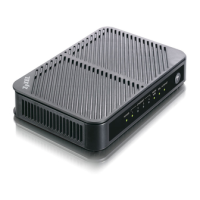
